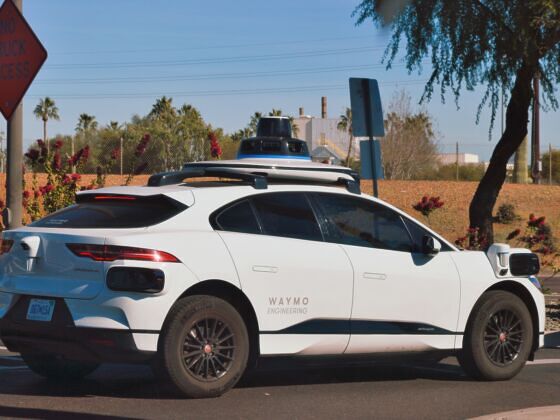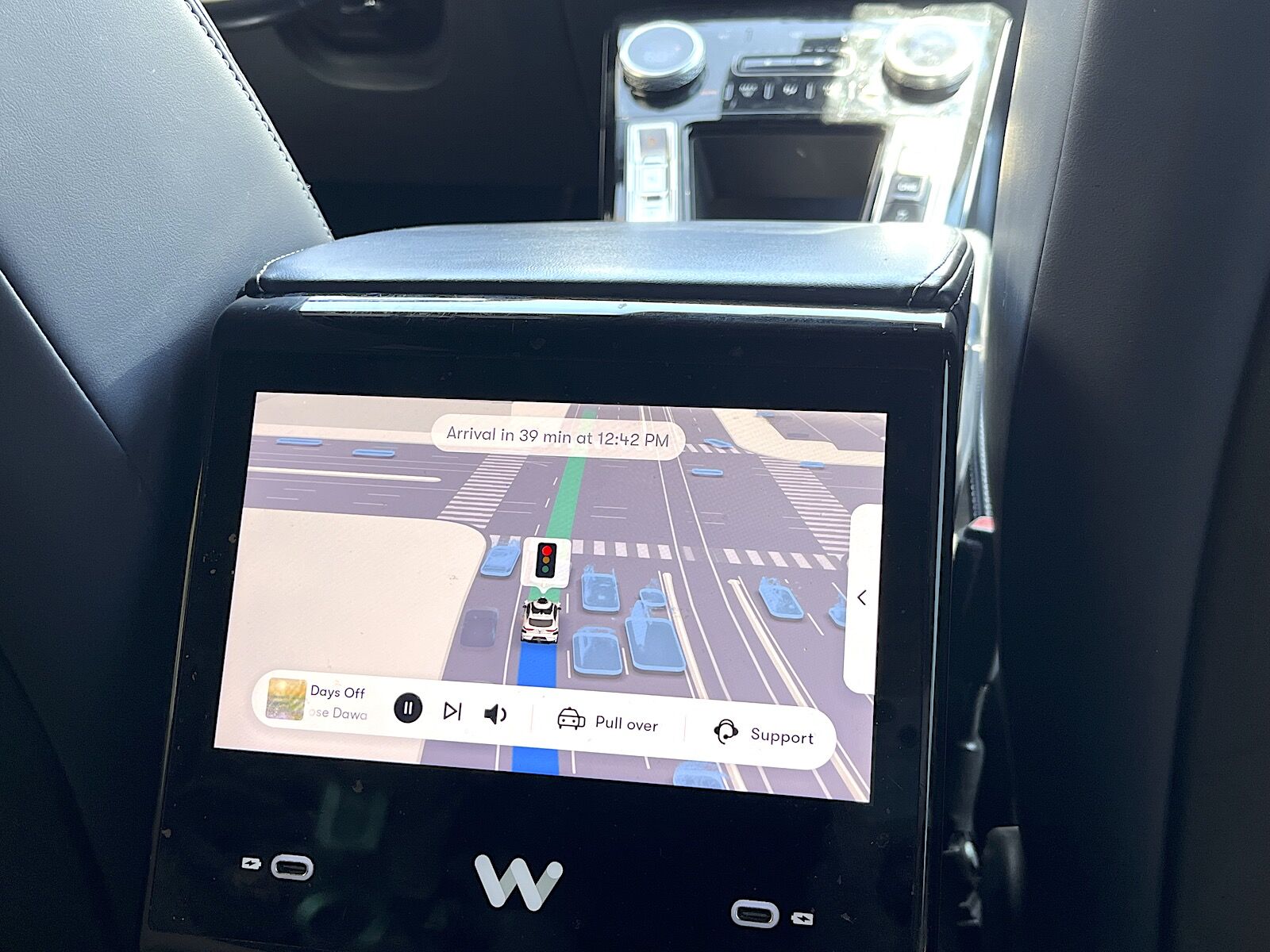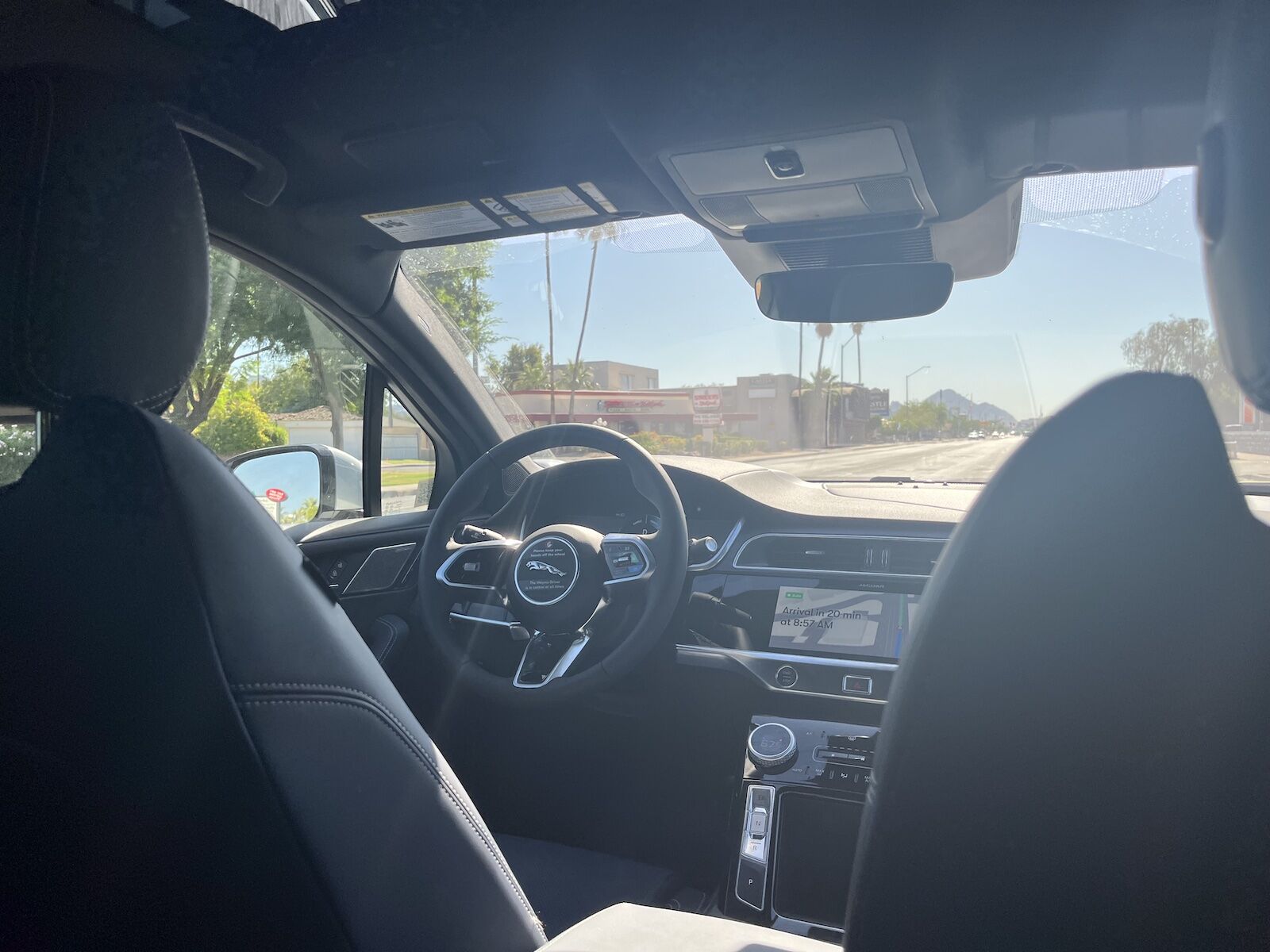My palms were slicker than a pool cue in Arizona heat as I walked out of Phoenix Sky Harbor International Airport in late May, and that wasn’t because of the desert sun. I was about to climb into the back of a Waymo self-driving car and relinquish all control to the bots – well, the very polite and hopefully competent algorithms, at least. I’d never ridden in an autonomous vehicle, and felt about as comfortable approaching one as I did boarding my first roller coaster at age seven. I wasn’t nervous because of the concept, necessarily, but because I hadn’t yet developed a frame of reference for how it worked. Phoenix, known for its sunshine and saguaros, was about to become the backdrop for my own personal technological odyssey.


I Spent Two Days Riding Waymo Autonomous Cars in Phoenix. It's Perfect for Travelers.
Riding Waymo One, the autonomous rideshare service that operates heavily throughout metro Phoenix, was the primary reason I visited the city. Waymo operates autonomous rideshares in San Francisco and 63 square miles of Los Angeles. While discussions with airports in those markets are underway, Phoenix Sky Harbor International Airport is currently the only airport in the world fliers can reach via an autonomous rideshare.
Over the course of two days and several rides, my stance about this service evolved from anxious to excited. The concept is perfect for travelers because it eliminates the need for a rental car, and it’s more affordable and streamlined than other rideshare services. I now believe autonomous vehicles are the future of urban transit for travelers, a transportation revolution rising from the Valley of the Sun.
How Waymo One works

My nerves rattled before hopping into my first Waymo One ride from Phoenix Sky Harbor International Airport. Photo: Tim Wenger
“Waymo offers Phoenix visitors a convenient, safe, and private transportation option as they arrive into Sky Harbor,” Anjelica Price-Rocha, a Waymo spokesperson, told Matador. “It’s a fun and exciting new way to experience the greater Phoenix area, and we hear from many travelers that hailing a Waymo is an activity they add to their list of ‘must-dos’ while in town.”
Phoenix is, at present, Waymo’s largest service market by a wide margin. The company recently surpassed 50,000 paid rides per week and more than 1 million fully autonomous rides. As of June 5, Waymo services 315 square miles in greater Phoenix, providing autonomously-driven rideshares to residents and visitors of the nation’s fifth-largest city. It now also services the Salt River Pima–Maricopa Indian Community north of Mesa and east of Scottsdale.
Booking and routing a Waymo One, the autonomous vehicle option, is similar to what frequent rideshare users are accustomed to with Uber and Lyft. Download the Waymo One app, connect your Google account and payment method, and from there you’re set to input a destination within its range and request a ride. A short time later, a shiny white Jaguar I-PACE will arrive, your initials displaying on a rotary screen atop the vehicle. It’s also possible to book a Waymo One through the Uber app.
“We’ve partnered with Uber to enable their users to hail a Waymo in Phoenix, which is a fantastic opportunity for even more people to experience our autonomous ride-hailing service,” Price-Rocha says.

The screen shows riders exactly what the Waymo sees. Photo: Tim Wenger
It’s impossible not to notice the rapidly spinning LIDAR displays on the sides, top, and rear of Waymo vehicles. These devices act as the eyes and brain of the Waymo by building and enacting 3D maps of the car’s surroundings and everything moving, flashing, blinking, or otherwise active within them. I couldn’t resist the urge to stick my pinky out toward the rear LIDAR and let it graze its tip, a display of immature curiosity I admit, but I maintain that it was harmless. The encounter lasted fewer than two seconds.
Once I’d satisfied that shallow craving and snapped a few photos of the car’s exterior, it was time to get inside. The I-PACE vehicles arrive locked as a buffer against scheming ride swipers, and can only be unlocked by the ride hailer in the Waymo One app. Quick side note: It’s imperative that your phone does not die between the time when you request the ride and the point at which it arrives, as has happened to me on occasion when booking Ubers at airports after long hauls where my phone battery didn’t survived the flight, otherwise you won’t be able to get in.
The car will wait seven minutes after arriving for the hailer to unlock the doors in the app before labeling the rider a no-show and departing.
Rides are available 24 hours a day, seven days a week. The company plans to add family-friendly features like car seats by request in the near future. All Waymo vehicles are electric, and return automatically to Waymo’s lot when in need of a charge. There, the vehicle displays a “low charge” warning, parks at an open charger, and a technician plugs the car in. Despite being most prevalent in Phoenix, many Waymo cars have California plates likely due to the location of the company’s headquarters in Mountain View, California.
What to know about taking a Waymo to or from Phoenix Sky Harbor International Airport

Do you see the ghost? Photo: Tim Wenger
Booking a Waymo to or from Phoenix Sky Harbor International Airport is similar to taking a Waymo elsewhere in the city with a few exceptions. Waymo can deposit riders at either the 24th Street or 44th Street Sky Train stations 24 hours a day. It’s a quick (and free) train ride into the terminal from either. From 10 PM to 6 AM, Waymo can drop off at the terminal directly. I used the service at both Sky Train stations, as I landed in the morning and left mid-afternoon the following day.
When the car arrived I popped open the trunk to place my roller bag by pushing a button on the bottom of the trunk door. The door then opened automatically when I arrived at the hotel, and the car also voiced a friendly reminder to grab anything I’d put back there. At the top of the trip, the same friendly female voice reminded me to buckle up and offered a couple tips for riding.
My 20-minute ride from the airport to a hotel in Uptown cost about $16. The same ride booked via Uber is about $19 for the standard UberX service. Everywhere I rode around the Phoenix area, which included shorter rides around Uptown and downtown, a longer ride out to Tempe, and from Tempe back to the airport, cost between $10 and $20.
What it’s like to ride in a Waymo
What stuck out the most to me about my first Waymo experiences was how quickly I became comfortable with riding in a driverless car. By the third ride the novelty had nearly worn off. I brought a GoPro with me to film my facial expressions during the first few rides, figuring there’d be some moments of shock and awe, but the footage was so boring that none of it made it to publication. I was surprisingly calm throughout. Perhaps I’m overly trusting of technology, or maybe, turning the driving over to machines is such a natural progression that it simply isn’t that big of a deal once you’ve experienced it.
I imagined it driving to the Denver airport, located far outside the city center and requiring a highway to reach. Or climbing a Colorado mountain pass in winter, the road covered in fresh-fallen snow. Each of these situations seem a stretch based on Waymo’s current operating procedure, but not far off in the grand scheme of automotive evolution. It struck me that in a decade, autonomous cars traversing these byways with ease will not just be possible, but ubiquitous.
I was also surprised at how normal the service has become in Phoenix, and how accustomed to it people there have become. Nearly everyone I spoke to on my trip, from the bartender at a posh downtown cocktail joint to the front desk clerk at my hotel, seemed to view Waymo as just the way things are now, and a routine part of getting around the metro area that’s as accepted as Uber, transit, or driving oneself. This contrasted sharply with how people back home in Colorado view riding in an autonomous vehicle. “Never heard of it,” a buddy had told me when I casually dropped that I was heading down to Phoenix to do a story on the company. “You’re not getting me in one of those things,” was my wife’s response. Multiple people including my mother iterated something along the lines of, “Do you think it’s safe?”
Despite my pre-trip anxieties, my own research combined with the fact that the company gained license to provide rides to testers back in 2018 had led me to believe that, indeed, riding in a Waymo is safe.

The Jaguar I-PACE is a good-looking car. Photo: Tim Wenger
My experience backed this up. The driving is conservative but not overly cautious as I’d expected. Waymo avoids interstate highways and other high-speed roads. This meant I spent a lot of time cruising the wide boulevards of Phoenix and even got to tour some side streets and neighborhood roads.
The riding experience was largely smooth, with a couple instances that stood out to me. At one point it pulled up to a pedestrian crosswalk separate from a traffic light, with a person on the other side out of view to me through the window. The Waymo slowed to a stop for her to cross. Another time it got a little jerky at a point where we approached a red light and another vehicle switched into our lane directly in front of us as we slowed. The Waymo crunched the brakes, though I’m not certain I wouldn’t have done the same thing had I been behind the wheel. At one point, two young skateboarders rode towards the vehicle in the bike lane to the right of the driving lane. The car slowed significantly from 30 mph to about 10 mph but didn’t lurch or jerk out of the way. On several occasions we passed bicyclists and the Waymo slowed but made no sudden movements.
I wavered between feeling unsettled and comforted by the fact that the steering wheel moves as if someone is turning it. The more I rode, the more I grew accustomed to this. A screen posted between the two front seats gives riders in the back a view of what the car is seeing as it sees it.
There are a few cameras inside the Waymo vehicles. These are used primarily for emergency situations. I wonder, however, how closely monitored the vehicles are. If I were stuck in traffic and decided to pee in a bottle in the back seat, would anyone notice or care?
On that note, multiple theoretical situations arose in my brain about why a driverless car may be preferable to a chauffeured one. I am a man and have had largely pleasant experiences with rideshare drivers around the world, but it’s well documented how the experience is different for women and people of color — particularly at night and if they’ve been drinking. There have been many times where I’ve hopped in a rideshare after a long day of work or a long flight and all I want to do is scroll my phone and not talk to anyone, but the driver keeps peppering me with questions. Waymo avoids that situation as well. The more scenarios like these I brainstormed, the more the rise of Waymo and similar autonomous rideshare services seems not only useful but inevitable.
Since returning home I think often of how Waymo would react in situations I face frequently while commuting. I live in a small town in western Colorado, where I commute primarily by e-bike and often on two-lane county roads without so much as a shoulder, let alone a bike lane. That means I ride toward the edge of the driving lane so cars can pass on my left as necessary. Would a Waymo undertake this maneuver, which requires momentarily dipping over the double yellow lines into the opposing lane to overtake me on the bike? Or would it slow down and proceed at the slow speed at which I’m riding?
I posed this question to Price-Rocha.
“The Waymo Driver has been carefully designed to anticipate and respond to behaviors unique to cyclists, and is constantly working to predict the different actions a cyclist might take in order to drive safely in their presence while providing adequate space,” she told me. “For example, Waymo is trained to cautiously share the road when cyclists ‘claim the lane,’ such as when the road is narrow or there is no bike lane. Our product and engineering teams will often collaborate with [employee social group] Waymo Cyclists to conduct focus-group sessions and gather feedback on their riding experience in an effort to improve the Waymo Driver’s behavior around cyclists.”
Why Waymo picked Phoenix

Photo: Tim Roberts Photography/Shutterstock
Waymo aims not only to provide autonomous rides to customers, but the company also believes its services can help to reduce traffic congestion and make roads safer by incorporating cutting-edge technology to reduce human errors. There’s certainly irony in the fact that much of the innovation promising to relieve us from clogged streets is taking place in a city known for low-rise sprawl in a country known for its affection for packing just one person into an air-conditioned SUV.
The ability of Waymo cars and other autonomous vehicles to communicate and coordinate with each other can actually help to optimize traffic flow, reducing congestion by maintaining consistent speeds and utilizing road space more efficiently. This also eliminates human error, a major cause of accidents, by having superior awareness and faster reaction times than human drivers.
The wide streets and grid-style layout of the Phoenix metro area make it a perfect place for the technology to evolve. The weather also plays a factor, as USAToday reported in 2017. Low winds and hot days, combined with government and business mindsets conducive to economic innovation, make the city an ideal place for research and development.
“Our goal is to offer genuinely useful, round-the-clock transportation services people can rely on for getting around town safely and sustainably with our all-electric fleet – whether that’s with local Phoenix residents, or out-of-towners,” Price-Rocha says.